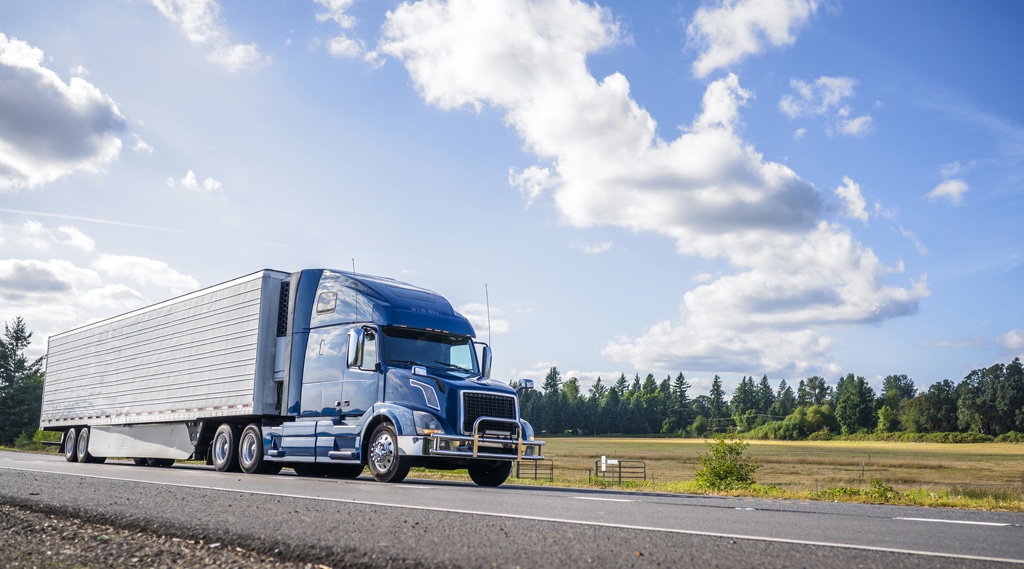As Wikipedia explains: “Aerodynamics is the study of the motion of air, particularly when affected by a solid object, such as an airplane wing.” Or, for the transportation industry, a truck and semi trailer. It would be easy to dismiss aerodynamics as something that trucking companies and others that transport their own products and materials don’t have to be concerned about, if not for the fact that doing that can cost you money.
With fuel costs always increasing (even after occasionally plateauing or even dropping temporarily) and big rigs averaging about 6 miles per gallon (mpg), any improvement in a vehicle’s aerodynamics can produce savings. And the more improvements you make, the more you save—especially if you’re operating a fleet of trucks and semi trailers.
Trucks, Semi Trailers and Drag
There are a couple of reasons that trucks get such poor gas mileage, particularly when pulling a semi trailer. The first is their weight, about which very little can be done, of course. These are large vehicles that are heavy even when the semi trailer is empty and they are much heavier when the trailer is fully loaded.
The second reason is what is known in physics as drag. Drag is the name for a type of friction—a force that is exerted in a direction opposite to the one in which an object is traveling. For example, a submarine has to overcome the drag exerted on it by the water it is moving through. In the case of a semi, that same type of force is exerted by the air, which is why drag is sometimes called air resistance or wind resistance.
Fortunately, there are ways to minimize that resistance, and truck and trailer manufacturers are increasingly focused on that task.
Where Does Drag Affect a Truck and Semi Trailer Most?
There are four areas of a truck and semi trailer where the rig is affected by drag. They are:
- The forward-facing surface of the tractor. Not surprisingly, the “leading edge” of a rig experiences a significant amount of drag—by some estimates, 25% of the total amount.
- The gap between the tractor and trailer. As air flows into this gap, it produces another 25% of the overall drag.
- The underbody and side of the semi trailer. Air tugs at a rig along the long, tall sides of the trailer as well as its undercarriage. This pull accounts for another 25% of total drag.
- The rear-facing surface at the back of the trailer. This one may come as a bit of a surprise. You might think that the tractor and trailer have “parted” the air and forced their way through its grasp, and that should be the extent of the drag. But air moves in funny ways, and it can “grab onto” the back of a semi trailer, too, producing the final 25% of the drag.
How can a semi get anywhere with all that opposition? While the numbers above add up to 100% (meaning the total overall drag), the actual amount that the force restrains the forward motion of a truck and semi trailer is fairly small. That said, it is in your best interest to take that small amount and make it even smaller.
How to Minimize Drag on a Truck and Semi Trailer
Trucks hauling semi trailers have been used for transporting materials and products for over 100 years. But only in the last decade or so has there been much attention given to aerodynamics.
What are truck and semi trailer manufacturers, owners and operators and other stakeholders doing to improve the aerodynamics of rigs, increase their average MPG and decrease fuel expenses? Many things, but some of the most promising are:
- Designing curves into the tractor. When you see a truck on the road, you know it is a newer model if the line from the grill back to the windshield is a gentle curve rather than a straight line. The same is true of the top of the cab and other surfaces. It is harder for drag to “grip” a curve than a corner.
- Minimizing the gap between the tractor and the semi trailer. As noted above, this gap accounts for approximately 25% of the drag encountered by a rig. The smaller the gap is, the less drag it produces.
- Using trailer skirts. These additional panels between a semi trailer’s axles direct airflow away from the trailer’s undercarriage, reducing drag. As a result, they can deliver fuel savings of up to 5%.
- Using a trailer “tail.” Panels that attach vertically to the back of a semi trailer and that curve slightly toward the trailer’s centerline can reduce the amount of drag produced. The savings they produce can increase fuel economy by up to 6%.
- Aerodynamic mud flaps. In addition to keeping semi trailer tires from sending rocks and debris toward other vehicles on the road, some mud flaps are designed to reduce drag.
- Other innovations. Generally speaking, anything that encounters wind resistance can be made more aerodynamic. On big rigs, products like cab extenders, roof caps, and aerodynamic bumpers and mirrors can make an important difference in drag.
Beyond Fuel Efficiency: Other Benefits of Improved Aerodynamics on Trucks and Semi Trailers
If you have ever walked or run into a strong headwind for a significant period, you know how tiring that can be. Fighting the wind is demanding, and your muscles, tendons and ligaments pay the price.
The same is true for semi-truck rigs. The harder they have to work to force their way through wind resistance, the more long-term damage results to systems like the drivetrain and others. So, improving aerodynamics does more than save you a few dollars at the pump—it protects your equipment investment.
Check Out Our Inventory of Semi Trailers for Rent, Lease or Sale
Many of the semi trailers for rent, lease or sale that we offer at Boxwheel have skirts and other enhancements to their aerodynamics. Contact us today to learn more about our large inventory of flatbeds, dry van trailers, liftgate trailers and refrigerated trailers.

